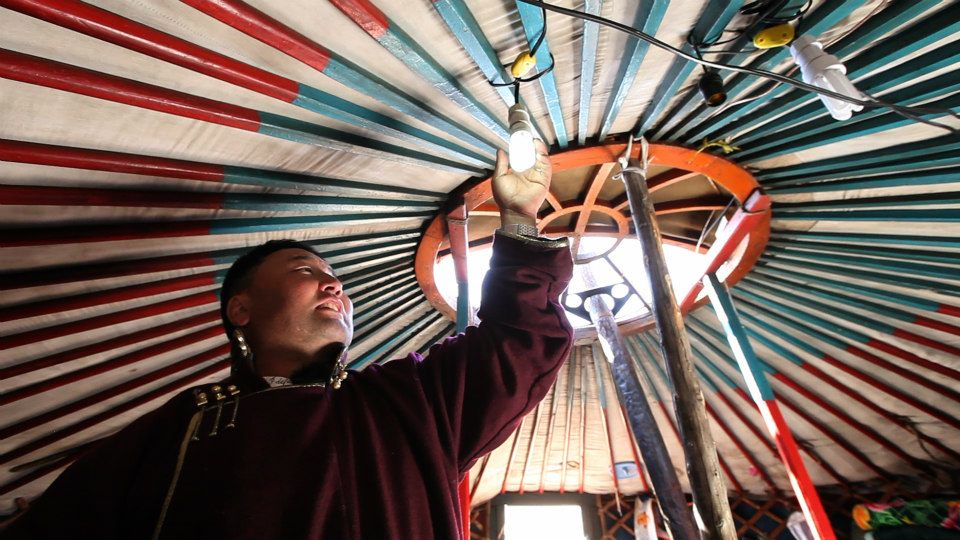A third of Mongolia’s population are nomadic herders, and many did not have access to electricity. The Government of Mongolia launched the 100,000 Solar Ger Program to rectify the situation by providing portable solar home systems to herder communities where they could benefit from modern electricity without compromising their traditional nomadic lifestyle. The Program eventually incorporated key principles for expanding access based on other successful international experiences through a public-private partnership (PPP) approach that capitalized on key comparative advantages of the public and private sectors to successfully exceed its target. Some of these key features of the project design included:
- Address affordability of solar-home system equipment through lower costs (from the scale generated by a bulk procurement) and cost buy-down subsidies funded by grants from the Government of the Netherlands;
- Maximize reach into communities in remote areas in the geographically vast country by utilizing a combination of private dealers, a network of sales and service centers across the country, and the network of local government administrations;
- Establish standards through high-quality specifications so that herders could purchase solar home systems with confidence.
- Ensure sustainability through the availability of after-sales care within proximity of herder communities from the network of sale and service centers;

The Renewable Energy and Access Project (REAP) was supported by the World Bank, the Global Environment Facility (GEF) and the Government of Netherlands. Migara Jayawardena was the World Bank team leader for REAP, and it was prepared by a team that included Enno Henderjemans.
- To download a paper summarizing the approach to Mongolia herder electrification program, click here.
- For an Al-Jazeera story on the 100,000 Solar Ger Program – Mongolia’s Nomads Warm to Solar Power – click here.
- To watch a short documentary on REAP – Capturing the Sun in the Land of the Blue Sky – click here.

